Is a cucumber a vegetable, fruit or berry?
Cucumbers owe their name to the ancient Greeks, who called the culture "aguros", which means immature or immature in translation. This is one of the few crops whose fruits are consumed unripe.
Cucumbers 95% water and low in calories, so they are often included in diet meals. Cucumbers also contain many useful components that have a beneficial effect on the body, which is why the berry is actively used by traditional healers.
Content:
- From the history of cucumbers
- The chemical composition and benefits of cucumber berries
- When cucumbers can be harmful to health
- Scope of cucumber culture
- Secrets of growing cucumbers
From the history of cucumbers
The history of cucumbers goes back thousands of years. Their homeland is tropical Asian countries. The ancient Greeks and Egyptians also cultivated the cucumber culture. Archaeological excavations, ancient chronicles and frescoes on the walls of temples depicting a cucumber vine prove that people domesticated the plant three thousand years before our era. In the wild, lianas plants reach twenty meters in length. Today, wild cucumbers can be found in Asian countries with subtropical and tropical climates.
The chronicles describe that cucumbers came to Russian countries in the 16th century, but in fact, these berries have been known to the Russians since the 9th century. And during the reign of Peter I, an order was issued on a large-scale vegetable farming. Since that time, cucumbers have been cultivated constantly.
Cucumbers were classified by botanists as false berries, because they are overgrown juicy fruit beds, on the surface of which fruits and seeds are located.
Cucumber berries belong to the pumpkin family, therefore, the fruits themselves are often called pumpkins, which differ from berries in a large number of seeds. According to the botanical description, berries are represented by juicy fruits of trees or shrubs, which are formed from flowers, and vegetables - by any edible parts of plants. Fruits, nuts and seeds are not included in these categories.
But in cooking, fruits and berries are called juicy fruits with a high sugar content, and vegetables are the rest of the edible parts of plants. Therefore, cucumbers are often called vegetables.
The chemical composition and benefits of cucumber berries
Cucumbers are very juicy and 95% water. But they are valued for their high content of valuable components:
- dietary fiber
- organic acids
- mono- and disaccharides
- starch
- macronutrients - calcium, magnesium, sodium, potassium, phosphorus, chlorine
- trace elements - iron, zinc, iodine, copper, manganese, selenium, fluorine
- vitamins - PP, A, groups B, C, E, K
- pectin compounds
- proteins
- carotene
- fat
- carbohydrates
Due to its rich mineral composition, cucumbers are used in folk medicine. They help to remove toxins and toxins from the body, strengthen the walls of blood vessels, normalize the function of the liver and gastrointestinal tract, and also restore the structure of hair and nails and accelerate their growth.
Due to its high liquid content, cucumber prevents dehydration and is indispensable in dietary courses.
Cucumber juice is actively used in cosmetology.On its basis, moisturizing, toning and anti-aging products are made, which are designed to soothe, nourish and tighten the skin, narrow enlarged pores, and make it younger and healthier.
When cucumbers can be harmful to health
Despite all the benefits of a cucumber berry, abuse of this product can lead to negative consequences:
- Cause excessive gas production, which is especially harmful for lactating women, because it leads to colic and upset stomachs in babies.
- Increase the acidity of the stomach. Therefore, fresh and canned cucumbers are not recommended for people with stomach diseases.
- The product should be used with caution by people with kidney and urinary tract diseases.
Cucumber-based cosmetic preparations should not be used for infectious diseases and skin lesions. Before starting cucumber therapy, you should make sure that the person does not have an individual intolerance, in which the reception and use of such funds is unacceptable.
Scope of cucumber culture
Cucumber berries are widely used in cooking for cooking and canning. And also these vegetables have long been used by traditional healers for medicinal purposes:
- Remedy for constipation. Vegetables are placed in water for a month. A mild laxative drug is prepared from the resulting brine. Add two tablespoons of vegetable oil and a spoonful of honey to a glass of brine. You can also drink one liter of pure brine throughout the day.
- Means for weight loss. Cucumbers are eaten fresh, at least two kilograms per day. Such cucumber days should be arranged once a week and excessive physical exertion should be avoided.
- With skin irritation. Cucumbers are cleaned of seeds, dried and crushed to a powder state, which is sprinkled on the affected skin.
- To eliminate rashes, itching and the effects of a burn, the pulp of fresh vegetables is used as a compress.
- In the treatment of hepatitis. Ripe berries and vine roots should be chopped. Pour a tablespoon of the mixture with a glass of water and cook for about half an hour. The broth is taken half a glass three times a day.
- For the relief of renal colic. Cucumber seeds (1 tsp) are poured with boiling water (120 grams) and boiled for 20 minutes. You need to take the broth warm.
- With bronchitis and atherosclerosis, fresh cucumber juice has proven itself well. Vegetable liquid is taken three times a day, 2 tablespoons.
- Cucumber broth will help stop bleeding. To prepare it, you should take 50 grams of plant tops, grind and steam with two glasses of boiling water. Simmer the composition in a water bath for 15 minutes and leave for another half hour. Consume 100 grams three times a day.
On the basis of cucumbers, cosmetic preparations are prepared: masks, creams, tonics, which are used to moisturize and rejuvenate the skin. Alternative remedies are easy to prepare yourself by passing the miracle berries through a meat grinder or simply cut into slices. Chopped cucumbers are placed in the freezer, and then thawed and used.
Secrets of growing cucumbers
Cucumbers are native to the tropics, so special attention should be paid to temperature and humidity. The optimum temperature for growing plants is between 22-28 degrees. If the temperature drops to 15-20 degrees, the culture slows down its growth. When the temperature drops to 10 degrees, the plant begins to hurt and dies.
In order for cucumbers to develop normally and give good yields, the soil for planting should be prepared in advance:
- form ridges 70 cm wide and at least 30 cm deep
- dig a trench in the center of the ridge to the full depth
- a mixture of fallen leaves, grass, peat and sawdust is placed in the recess
- in the spring, manure and sod land are poured into the trench in equal amounts
- water the ridges with a mineral solution, for the preparation of which 20 grams of superphosphate, 10 grams of potassium salt and a little manganese are added per liter of water
The prepared beds are covered with foil and left until planting. When the soil temperature reaches 15 degrees and stable warm weather is established, seedlings or cucumber seeds are planted.
Water is the basis of the cucumber, so the culture needs regular watering.
During the period of growing green mass and development root system cucumbers need to be watered at least once a week, and during fruiting every 2-3 days. Water for irrigation should not be cold, because low temperatures provoke the development of diseases. When irrigating, do not allow water to fall on leaves and shoots, therefore experienced gardeners recommend using drip irrigation system... Fertilizer solutions are often added to the system, and the nutrient moisture goes directly to the roots.
More information can be found in the video:
Cucumbers are fed in several stages:
- 14 days after disembarkation. Apply organic or mineral root dressing.
- At the beginning of flowering. During this period, you can feed the culture with superphosphate and ash under the root or by spraying.
- During fruiting, urea is introduced in the form of a solution.
- To extend the fruiting period and increase the yield, the last top dressing can be repeated after two weeks.
When growing cucumber berries, it is important to provide enough sunlight and moisture. And you also need to remember that cucumbers do not tolerate cold weather and, if there is a lack of heat, they begin to hurt. If you take into account the needs of the culture, then it will not be difficult to grow a good harvest of useful false berries.



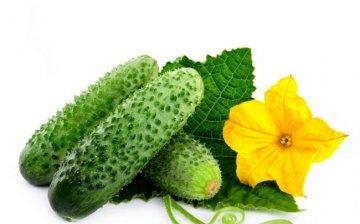
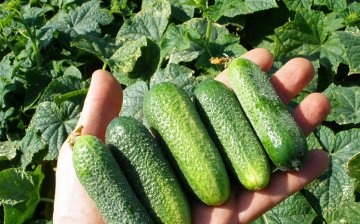
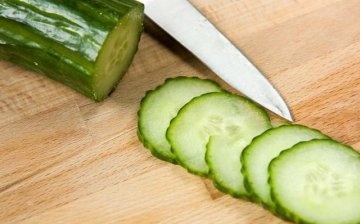
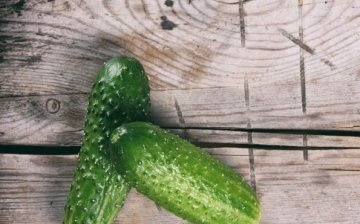
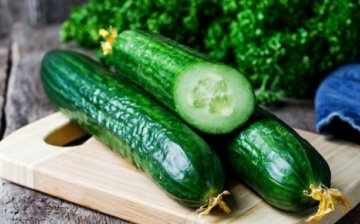







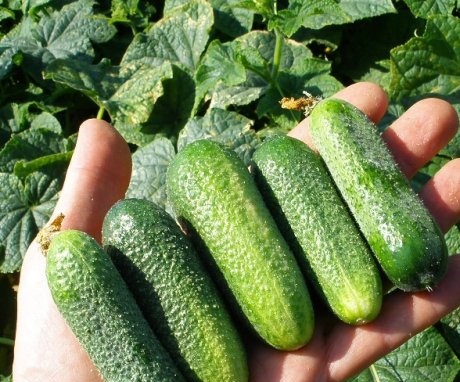
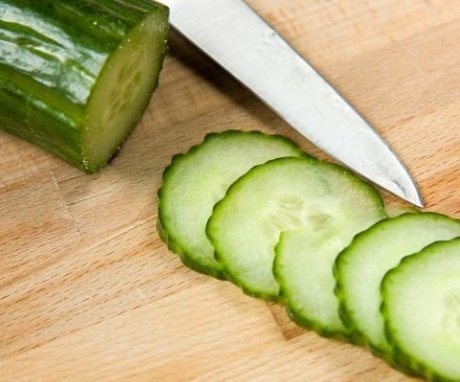

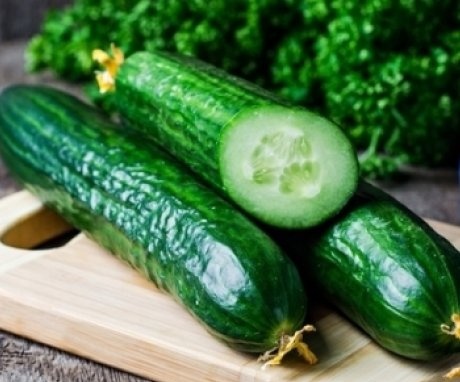

We have always considered a cucumber a vegetable, therefore, we refer to it as well. We give preference to ground cucumbers, they grow in our region until October. In addition, greenhouse cucumbers are less suitable for pickling and canning. Best of all, we grow Dutch gherkins. Last year, I tried to plant a Chinese miracle. In the description, it was said that cucumbers grow up to 50 cm long. I have grown only 2 cucumbers, of an incomprehensible shape.
Cucumber is considered to be a vegetable. Perhaps, from the point of view of botany, it would be more correct to call it a berry, but not a fruit, for sure. Fruits with seeds and trees grow. I love cucumbers in any form: fresh for their aroma, pickled and pickled for their taste.
Not all fruits grow on trees and have seeds. Think of bananas and pineapples. These are herbaceous plants, there are no seeds in them, but they are fruits. And the fact that a cucumber is a berry is surprising to me.
It was interesting to know that a cucumber is a berry, somehow it looks more like a vegetable, if not in appearance, then in consumption. But it doesn't matter, the main thing is that it is a tasty and healthy product that is not difficult to grow in your garden.